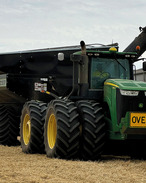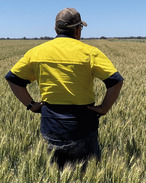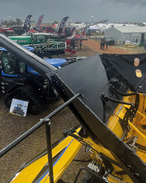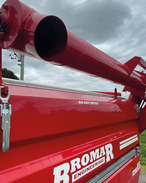This article is 7 years old. Images might not display.
According to the once-every-second-decade Agricultural Census data, varying regional climatic conditions have been both a boon and a burden to crop production and livestock numbers in 2015-16.
Director of Environment and Agriculture Statistics for the ABS, Lauren Binns said while winter and spring rain in parts of New South Wales and Queensland had produced bumper crops in commodities such as barley, a warm, dry spring in southern Australia saw a decrease in other crops.
“Barley production increased by 6 per cent in 2015-16, driven by New South Wales farmers increasing their planting area with excellent yields,” Ms Binns said.
“However wheat production fell by 5% as a result of hot conditions in late spring in South Australia and Victoria. Similarly, production of canola fell by 21% with reductions in the area planted in Western Australia and poor conditions in South Australia and Victoria.”
Parkes New South Wales primary producer Richard Rice said he was surprised at the reported increase in barley plantings.
“With barley prices currently at under $200 a tonne – it isn’t economical for growers to be sowing large amounts,” Mr Rice said.
“Barley might yield well but at the end of the day a farmer is motivated by price,” he said.
Richard said plantings of break crops such as chickpeas and other pulses had definitely increased in his area – driven mostly by the strong prices.
“Chickpeas for example, have been consistently fetching between $800 and $900 a tonne,” Mr Rice said.
“Canola is also strong at around $500 a tonne,” he said.
To the north, favourable conditions in Queensland and the Northern Territory had contributed to the earlier than anticipated restocking of beef cattle herds.
According to the ABS, the national meat cattle herd fell by 1% to 22.3 million, with small falls across most states offset by increases in the NT.
“Dairy herds fell by 2% to approximately 2.7 million, while the sheep flock fell by 1% to around 67.5 million. Nationally, the number of agricultural businesses increased by 1% to 85,681 in line with a similar increase in the total area of agricultural holdings,” the ABS said.
Director of Environment and Agriculture Statistics Lauren Binns said strong support from the agricultural sector was the foundation of the Agriculture Census – the ABS’ largest business collection - and the ABS greatly appreciated farmers’ time and effort in providing data.
The minimum size for a farming business to be included in the Agricultural Census was increased this year, from those with an average annual turnover of $5000 or more to those with a turnover of $40,000 or more. This new scope is more in line with other statistical collections and significantly reduced the survey burden on small farming operations.






















